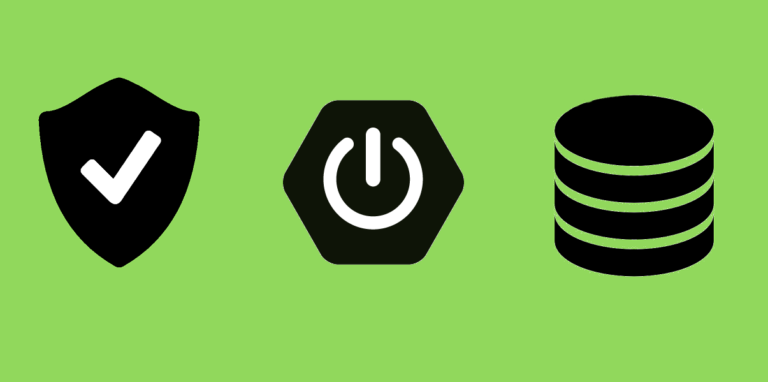
When I first started using Spring Data JPA, its capacity to make data access in Spring applications simpler piqued my interest. This framework provides:
- A higher-level abstraction for managing data.
- Integration with standard JPA providers like Hibernate.
- Powerful repository and query capabilities.
I dove into its core components:
- Repositories: Interface-based domain type management.
- Entities: Mapped to database tables.
- CrudRepository: Basic CRUD functionalities.
- PagingAndSortingRepository: Pagination and sorting.
I found it fascinating how Spring Data JPA reduces boilerplate code, making database interactions more efficient and readable.
This Articles Contents
Understanding Spring Data JPA Repositories
When I work with Spring Data JPA repositories, I handle data persistence more efficiently. These repositories interface with my database layer, simplifying CRUD operations.
- Interface Creation: I create an interface by extending JpaRepository.
- Generic Parameters: I specify the entity class and primary key type.
- Automatic Implementation: Spring Data JPA provides the implementation at runtime.
For example:
public interface UserRepository extends JpaRepository<User, Long> {
}- Query Methods: I define methods by following naming conventions.
- Custom Queries: If needed, I use @Query annotation for custom SQL.
Using these repositories, I achieve streamlined database interactions.
Basic CRUD Operations with Spring Data JPA
I will show you how to perform basic CRUD operations using Spring Data JPA.
Create Operation
To save an entity:
MyEntity savedEntity = myRepository.save(myEntity);Read Operation
To find all entities:
List<MyEntity> entities = myRepository.findAll();To find by ID:
Optional<MyEntity> entity = myRepository.findById(id);Update Operation
Update is a combination of read and save:
- Retrieve the entity.
- Modify its fields.
- Save it.
Delete Operation
To delete by ID:
myRepository.deleteById(id);To delete an entity:
myRepository.delete(myEntity);Understanding Entity and Primary Key Annotations
When defining an entity in Spring Data JPA, I use the @Entity annotation. This tells the framework to map the class to a database table. Here’s a simple example:
@Entity
public class User {
@Id
@GeneratedValue(strategy = GenerationType.IDENTITY)
private Long id;
private String name;
}Key Points
@Entity: Marks the class as an entity.@Id: Denotes the primary key of the entity.@GeneratedValue: Specifies how the primary key should be generated.
Ensuring these annotations are correctly set up is fundamental for the database to interact seamlessly with the application’s domain model.
Using Query Methods in Spring Data JPA
First, I define methods in my repository interface. Spring Data JPA creates the query automatically based on method names.
public interface UserRepository extends JpaRepository<User, Long> {
List<User> findByLastName(String lastName);
User findByEmail(String email);
}Next, I specify the method names. Their prefixes determine the operation, and the property names form query criteria.
Common method prefixes include:
findBycountBydeleteBy
Example usage:
List<User> users = userRepository.findByLastName("Smith");
User user = userRepository.findByEmail("john.doe@example.com");Finally, I use these methods directly, no SQL or JPQL required. It simplifies query building significantly.
Spring Data JPA and Paging
In Spring Data JPA, paging helps manage large datasets by dividing them into manageable chunks. I typically use the PagingAndSortingRepository interface to achieve this. Here’s how I do it:
- Extend the Repository:
public interface UserRepository extends PagingAndSortingRepository<User, Long> { } - Create a Pageable Instance:
Pageable pageable = PageRequest.of(page, size); - Fetch the Paged Data:
Page<User> users = userRepository.findAll(pageable);
The Page object provides pagination details like total pages and current page content. This way, I efficiently handle and display large datasets in smaller, easily navigable parts.
Transaction Management in Spring Data JPA
I find transaction management crucial in Spring Data JPA. Transactions ensure data integrity and consistency. Here’s a closer look at how it’s managed:
- @Transactional Annotation: I use this annotation to manage transactions declaratively. Applying it at the class or method level wraps the code in a transaction.
- Propagation Levels: I can control transaction behavior using propagation levels like
REQUIRED,REQUIRES_NEW, andMANDATORY. - Exception Handling: I determine rollback scenarios by specifying
rollbackForandnoRollbackForattributes in@Transactional. - Programmatic Transactions: Sometimes, I utilize
PlatformTransactionManagerfor fine-grained control via code.
Effective transaction management ensures robust, reliable applications.
Testing Spring Data JPA Repositories
When I test Spring Data JPA repositories, I follow these steps:
- Add Dependencies: I include
spring-boot-starter-testin mypom.xml. - Configure Test: I annotate the test class with
@DataJpaTestto configure repository testing. - Inject Repository: I use
@Autowiredto inject the repository instance. - Test CRUD Operations: I call repository methods like
save,findById,findAll, anddelete. - Verify Results: I use assertions to verify the results. For example:
assertEquals(expectedValue, actualValue);
These steps help me ensure my repository logic is correct and reliable.
Best Practices for Using Spring Data JPA
When working with Spring Data JPA, I focus on various practices to ensure efficient and maintainable code:
- Entity Design: I always use meaningful table names, column definitions, and proper relationships among entities.
- Avoid Native Queries: I leverage the power of JPQL and avoid raw SQL to maintain portability and readability.
- Transactions: I manage transaction boundaries carefully using
@Transactionalannotations. - Pagination and Sorting: For large datasets, I use
Pageablefor pagination and sorting to improve performance. - Repository Methods: I write specific query methods in repositories instead of using generic methods.
- Performance Tuning: I monitor and optimize performance by using caching and lazy loading appropriately.
Conclusion
In this tutorial, I have taken you through the basic flow of Spring Data JPA. By following along, you should now be familiar with:
- Setting up a Spring Data JPA project.
- Creating entity classes and defining JPA annotations.
- Implement repository for CRUD operations.
- Configuring the data source and JPA properties.
- Writing simple queries using method names.
Understanding these fundamentals allows you to harness the power of Spring Data JPA for database interactions, making your development process more efficient and straightforward. This knowledge base sets the stage for exploring advanced topics in future tutorials.